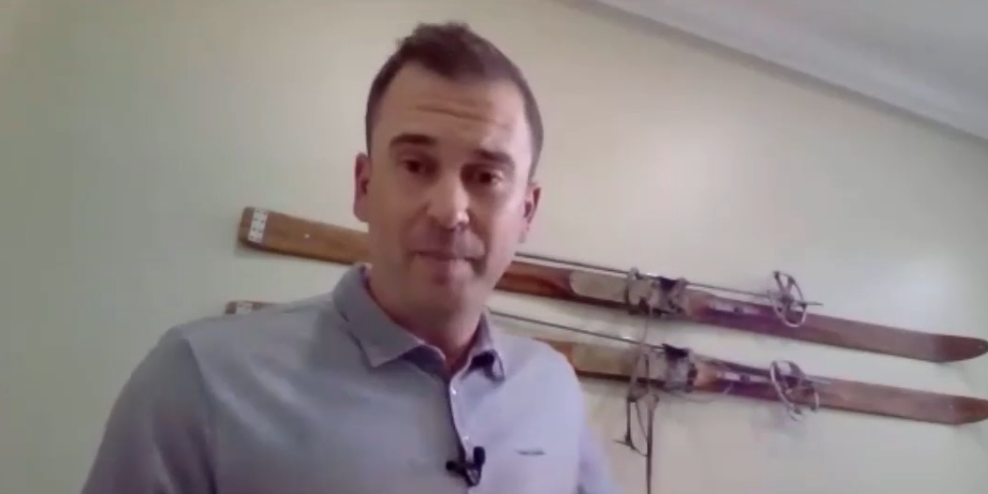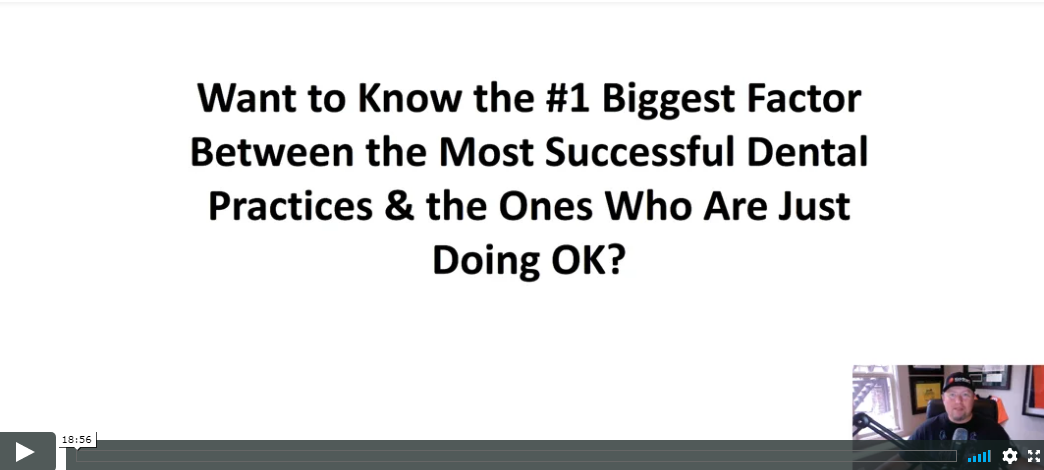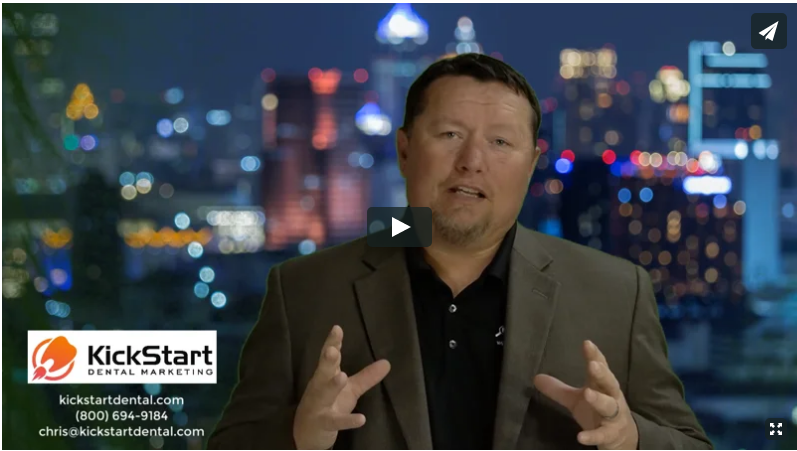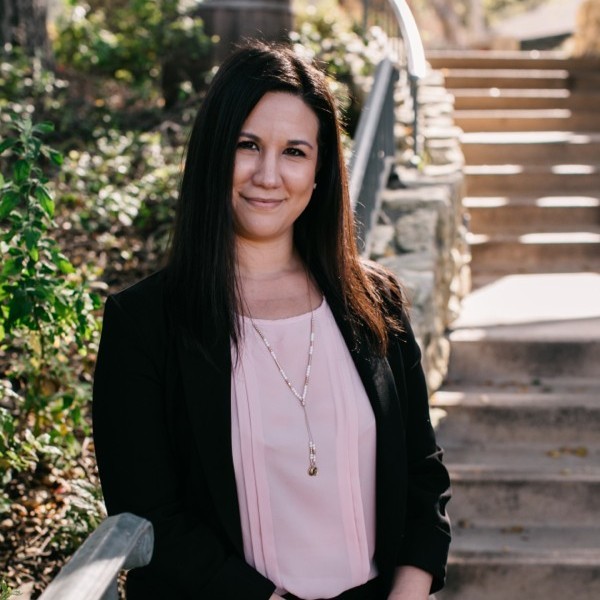Chris Pistorius:
I am honored to be with one of the leading people in startup dental practices in terms of consulting. This company’s name is Ideal Practices. I’m with the president of the company, Stephen Trutter. They, like I said, are one of the leading consulting companies for startup dental practices. And it’s cool because they can help all the way from finding demographics in a particular city that you’re thinking about maybe opening a practice to the legal stuff, the equipment, the real estate, the financing, the office design, pretty much everything. Stephen, thank you so much for being with us. I’ll let you talk a little bit more about it in a second, but I appreciate you joining us today.
Stephen Trutter:
Chris, great to be here. Thanks for having me here and can’t wait to share some insights here with the industry and with the community, so thanks a lot. Really appreciate your support.
Chris Pistorius:
Awesome. Love the skis behind you. You got to tell me more about those.
Stephen Trutter:
Oh, man. Some birthday or Father’s Day, a few years ago in… You’re in Colorado, but I’m in Florida, and we don’t have a lot of mountains in Florida, but I’m an avid skier, and I go out there a couple of times a year. My wife said, “I’m going to get a pair of vintage skis,” so she actually contacted her brother-in-law, who’s… I call him my brother-in-law, lives in Denver, and my wife found these at a local thrift shop. These things are in great shape. I was showing you earlier, the leathers and everything, they’re so… Whenever we moved here about a year and a half ago, they’ve always been in the office. They’ve always hung on a wall. Yeah, I don’t know, ’50s or ’60s. I will not take them off and ski in them in the winter, though. I will not.
Chris Pistorius:
Yeah, it’s crazy that people actually used to strap those things on. I can’t even imagine.
Stephen Trutter:
No wonder why people broke ankles back then. You never know. That’s a broken ankle right there.
Chris Pistorius:
Yeah, absolutely. All right. Why don’t you start off just telling us a little bit more about Ideal Practices, what you guys do, a little bit about yourself, and we’ll go from there?
Stephen Trutter:
Chris, thanks. Yeah, you know what? We have the fortunate opportunity to be able to serve the dental community and being a leading consulting firm for dental startups. That’s who we serve, private practice ownership. Our goal is always simply to be able to empower young dentists today to be able to open up their own practice through the means of a startup. We don’t support corporate dentistry, or I don’t set up corporate dental offices, so it’s really fueling private practice ownership and giving young doctors today, especially, that opportunity of clarity and confidence on how to open up a practice properly with a customized step-by-step process.
Stephen Trutter:
My partner, many people may know, Jayme Amos. They probably see him all over the media. We lead a team of 15 individuals, really, 15 experts, to be able to guide clients with expertise in certain areas, just like you as a dentist are all experts or specialists. We have specialists that able to guide through areas of financing, real estate, demographics, systems, hiring, protocol, floor planning, negotiations of equipment and construction, so there’s not an area that we don’t touch. And we’ve built some of the greatest success stories in the entire country. Everybody’s got a different idea of what success is to them, and so the joy that we get is to be able to build a practice that can not only just open, but open with purpose. Our practice owners open with a purpose to be community leaders. It’s a thorough joy of doing it over 15 years and almost 700 startups myself to be able to say, “Wow, we get to do this every single day,” and every single practice is different.
Chris Pistorius:
Yeah, I think that’s awesome. And as you know, it seems like even this year, even through COVID, we’ve gotten, here at KickStart, so many calls from new dentists just looking to start up a practice. We certainly can help them on the marketing side of things, but there’s so many questions that they have about opening a practice. Where should I open, and what kind of design should I build? There’s just so many questions other than marketing that I see so many people needing, and these are crucial topics that if you get wrong in the beginning, it can really set the tone for your practice for years to come, so you’ve got to make sure that you get a lot of that stuff right.
Stephen Trutter:
100%.
Chris Pistorius:
Yeah, so tell me, how did you guys get started in this? How long have you been doing this, and how did it all come about?
Stephen Trutter:
Oh, wow. 15 years of doing this. My partner and I each have been 15 years. I think what happened was we realized a number of years ago that the typical path of starting a practice years ago was trial and error. And many of you watching this are probably going, “Oh yeah, I known a friend that did that, and then they struggled for three or four years, and they continued to work as an associate three years into their startup,” and we were like, “There’s a better method,” and part of that better method wasn’t just like, “How do we get better to bigger revenues?” It was more of what we would call these three tiers. If you can imagine a stair-step, we say, “Great, everybody can open up a practice.” We call it the three P’s. We call it practice, profits, and then purpose. Everyone can get there to practice. We realize, “Well, everybody can get a practice. Four walls, throw a roof up, and get some chairs, and you got a practice.”
Stephen Trutter:
That next year, few people realized it was the profit side, and that’s where you start to develop systems and protocol to be an actual, profitable dentist. And many can achieve that. The different tier was later what we would call purpose. That’s that ultimate layer, and we realized that no one really strived toward having a practice with purpose. They kind of were like, “I know I don’t want to work for somebody else. I know I want to be profitable, but how do I have a practice that can serve my community in a bigger cause, that way people are choosing my practice?” Not because of my discounts. People don’t work for me because I pay the most. It was like, “Wow, we can now build a practice with purpose.” And nobody had a program and no one had built something. Everyone was just kind of getting bits and pieces from areas, so we said, “Let’s build a program. Let’s build a step-by-step process that can be a guide to be able to get practices open successfully,” because that’s the key, is successful opening. Not just opening because everybody can do that.
Chris Pistorius:
Exactly. Yeah, I see dentists sometimes… They’re in a huge rush to get open. Open, open, open, and I understand that. There’s financial responsibilities. You want to get to market, but part of me sometimes wants to tell them, “Hey. Slow down, take a breath, make sure we get this right from the beginning, build that foundation, and go,” so I think that’s a-
Stephen Trutter:
Even pre-COVID that we’re right now, the margin of error pre-COVID was small in terms of startups. The margin of error is smaller now, so to be able to have a process to get open successfully, find the right location, negotiate the right things is crucial to getting open properly and to be able to have a platform so that you can have predictability for a decade and beyond. That’s the key.
Chris Pistorius:
Yeah, and this is a good segue. What are some of the most common things that you see new dentists miss the boat on when they don’t… Obviously, a lot of them are younger people that are just starting their first practice. What are they missing the boat on? What are some common mistakes that you see?
Stephen Trutter:
I think one of the biggest areas that I see right now in the digital age, the technology age, and the information age is… I call it the peanut gallery effect. You may be familiar. Everyone’s heard the term “the peanut gallery,” and the peanut gallery, really, is the unsolicited advice. Even I see young dentists that come to us or approach us, and they say, “Yeah, as soon as someone says, ‘I want to buy a practice, or I want to open a practice, all of these people, or all they do is tap on their computer, and it’s like all these people have these opinions.'” A lot of the opinions that are out there are well-intentioned, but they come from people that either have only done it once, twice, or maybe never at all. And so they take this piecemealed approach to taking advice from people that may be testing their theory because they’re not willing to take the leap into private practice ownership.
Stephen Trutter:
And then they end up with like, “Wow, I could have opened on a timeline, but I ended up waiting three years because I took this advice from this person, or it’s very, very biased,” so I would say watch where the information comes from because one of the biggest pitfalls is going by advice that isn’t proven advice in startups. Practice management is different for startups than for established doctors. Even doctors who’ve maybe been open for years has well-intentioned advice for young doctors. The challenge is their advice is coming from a practice that may be very tenured and very seasoned, and that doesn’t apply to startups. Startups are a totally different animal, so I’d say that’s one of the biggest common tips that were kind of mistakes that I see.
Stephen Trutter:
I think the other areas are real estate and, really, chasing down real estate and thinking that I need real estate and funding, which is very, very important, but it is kind of going down that path of saying, “Let me just go find a space and not realizing what is the opportunity here from a demographical perspective,” and really doing the internal research of seeing who do I love to serve on a daily basis and being able to find that abundance of the kinds of people that are there.
Stephen Trutter:
I think the other third mistake I see a lot, as in your word, Chris, I see this… And you probably see it on Facebook posts. It is haunting sometimes. The post that comes from the doctor goes, “Hey, I’m getting ready to open my practice in four weeks. What’s everybody doing for marketing?” A marketing strategy has to develop months in advance. It’s kind of like the forgotten thing of, “Oh yeah, and I need these things called patients.” There isn’t a silver bullet for marketing. There isn’t, and you know this. It needs to be a developed strategy that takes months to implement and deploy. And they got to have resources like what your team provides and like what our team helps develop for our clients outside of even what you do as an agency to be in their community, knowing that it takes a ton of hard work to market our practice. It can’t just be like, “What’s the quick trick that everybody did,” a month before you open. You’re late. You’re too late. You’re not going to launch.
Chris Pistorius:
Yeah, no, I totally agree. It used to be kind of a “if you build it, they’ll come,” but that’s changed now because there’s so much pressure, and there’s so much competition in even the smallest markets now that that’s not so much the case. You’ve got to have a plan. You’ve got to have a strategy and the marketing side of it for sure.
Stephen Trutter:
100%.
Chris Pistorius:
Yeah. You talked a little bit about the real estate side of it, and that was one of my next questions, is in real estate, at least, the old saying is kind of, “Location, location, location.” I’m guessing that that’s pretty true when it comes to dental practices as well. Sometimes, is it worth the extra X thousand dollars of months of lease or extra thousands of dollars to build a practice to be in the right location?
Chris Pistorius:
I know, personally, for marketing, we have several clients that have what you would consider kind of tier-one type locations. We track everything for marketing for our clients, and we find that those people that are in those grade A or number one, tier-one locations, they do see sometimes a significant amount of traffic just from people seeing their sign along a road, or they work near them, a populated area, something like that. Maybe you could tell us a little bit more about this location thing. How important is it, and should somebody spend more money for that?
Stephen Trutter:
I think it depends on a number of different factors. There’s always the balancing act between… Is the juice going to equal the squeeze in terms of that real estate? In many cases, you can be a block off the main road of everything and save yourself 30 to 50% in real estate savings. That’s true. And I would say… I’ve had a number of huge success stories. We have million-dollar practice owners in 12 months, and I can think of multiple, multiple doctors. I can think of one, like Dr. Alexis, who opened up a practice. She wasn’t on the busy street. She didn’t even have a sign, and she was two doors down from another provider, and in 12 months created a million-dollar practice. And it wasn’t just simply her location.
Stephen Trutter:
While location, I think, can play a role, I look at it and say, “It is not the number one criteria for success of a practice,” so when people say, “I have the biggest sign,” well, that’s great. It works well for Starbucks or McDonald’s to be on that corner because well, people are going to get their $8 coffee and their $1 cheeseburger, but in 15 years and almost 700 startups, I’ve yet to have a practice as a drive-through hygiene room.
Chris Pistorius:
That’s a good idea, though.
Stephen Trutter:
Maybe I’m going to pioneer something here. Location is important, but you’ve got to balance it with your available funding and who you’re trying to attract from a patient base. In some cases, you may get that great location, spend 30 to 50% more in expenses and overhead, and the patients that may come through may not be your ideal patient as well. Location’s important, but it has a lot less to do with pretty buildings and big signs.
Chris Pistorius:
Yeah, yeah. Okay, that makes sense. Well, why don’t you tell us a little bit about if there’s a new dentist out there that’s looking to start a practice, and they want to work with you potentially, when somebody hires you, what’s your process? How does that start?
Stephen Trutter:
Part of it is it starts with a consultation. We have a limited amount of consultations each month, so that’s one thing I’ll be able to offer our viewers today. For those that are more interested in… Like, “Hey, I’m just not quite sure,” they can even check out The Startup Dentist podcast. That has a ton of resources where, basically, we take our 13-stage process, and we’re actually doing it in bite-sized podcasts through The Startup Dentist podcast. That’d be a great way for people to be able to figure out is this the right path in terms of startups.
Stephen Trutter:
But we really go through a process with clients to be able to understand what their true vision is of a practice, and so it starts with a consultation with our team to be able to understand, is this a good alignment for both parties to be able to do that? Everything that we do is customized. This is a 12 to 18-month process. It starts off with a very rigorous vision call where we go through, really, almost setting the stage for the next decade and beyond. And it’s not just based upon what kind of chairs do you want and what your colors are going to be. It’s a true vision of what a client wants to capture in their community. That 12 to 18-month process will go through everything from funding analysis to demographical marketing strategies, hiring, and so the scariest things about the business systems, floor planning, and effective negotiations with vendors and on everything from real estate to equipment and construction.
Stephen Trutter:
Our process is a 12 to 18-month process. Some people are shorter, some people are longer, but everything that we do is customized to the individual client because I don’t have a manual that says, “Follow this manual.” It’s individually strategizing with each point on each individual phase so that when they open, they’re prepared. My goal is twofold. To be able to have a client, to be able to get out of working for somebody else as quickly as possible, and number two is when that first patient comes in, I want that first patient for each one of my clients to be able to say, “Wow, I’m your first patient. This is the most well-oiled machine I’ve ever seen of a practice,” on their very first patient that they see. That’s their goal.
Chris Pistorius:
Yeah, that’s awesome. Now, what about a practice or somebody that buys an existing practice? Can you help with that or no?
Stephen Trutter:
We’ve really dedicated ourselves to startups. That’s a totally different animal of acquiring a practice, and I don’t discourage acquisitions. It’s the right fit for the right people. Startups are not for everybody, so I would say there’s probably a lot of great resources out there to acquire a practice, but my systems are built for startups because acquiring practice is really looking at systems differently and really trying to adapt systems [inaudible 00:17:16]… My team is really… The line I give a lot is we’re really good at developing and preventing. We’re really not as great at fixing. In other words, it’s hard to fix something if it’s kind of broken in a practice. It’s a lot easier to say, “We got a foundation to build upon.”
Chris Pistorius:
Yeah. Yeah, I know on our side of the marketing stuff, we obviously work with existing and new, but the new ones are kind of nice because nobody’s gone in and really messed anything up, so it’s kind of like you can build something from the ground up, and you can kind of start from scratch, so it’s [crosstalk 00:17:51]-
Stephen Trutter:
It’s like a golf swing. It’s like I can have bad habits for 10 or 15 years and then take lessons, and when someone’s trying to fix me. Everyone saw the old videos of Charles Barkley years ago when he [inaudible 00:18:02]. He had hitches, and everything was a golf swing. It’s like, if he had just taken lessons 20 years ago when he was still playing in the NBA, he would’ve had a pretty groove swing. My analogy is I’d much rather be able to take somebody who goes, “I don’t know how to run a practice,” and develop strategies that are built, and it can be tiered up and really scaled.
Chris Pistorius:
Yeah. No, absolutely. Well, I guess finally, if somebody does want to work with you… And I appreciate it. I know you only have so limited time and limited free consultations that you guys can do, so offering our viewers one of those is awesome. I really appreciate it.
Stephen Trutter:
Absolutely.
Chris Pistorius:
If somebody wants to take advantage of that, what’s the best way to go about it?
Stephen Trutter:
The best way to go about it is to check out our website at idealpractices.com, and then I’ll make sure that Jen, who’s one of our… Everybody who talks to Jen, you will all love Jen. Jen is one of our strategic advisors. I’ll offer to, and I’ll let Jen know, we’re going to be able to offer private consultations to any of the viewers that come from this opportunity. Typically, it’s like a one-hour consultation. And in those consultations, what you’ll find with Jen is you’ll understand the care that our team really wants to provide for these doctors, and for you, as viewers, to understand what are your goals and how do you want to accomplish these. For everybody, I want to be able to offer something today, is that consultation.
Chris Pistorius:
Awesome. Well, thanks so much. I appreciate you taking the time to do this. I know you’re busy. I know [crosstalk 00:19:31]-
Stephen Trutter:
You as well.
Chris Pistorius:
Yeah, this is going to add a lot of value to the folks that come to our website and look for help with starting up a practice because there’s so much to do and so much stress. It sounds like… I know for a fact from working with you that you can really just take a lot of that stress and leverage that with your experience of doing… How many… Did you say 700 startups?
Stephen Trutter:
I’m approaching… I remember Jayme was talking… We did the numbers. Somewhere between 650 and 700. Not one is the same. They’re all very, very different. Different states, everything.
Chris Pistorius:
Yeah, that’s awesome, though.
Chris Pistorius:
For somebody to be able to just leverage that experience and you know what works well, what doesn’t, that can go a long way.
Stephen Trutter:
I appreciate it.
Chris Pistorius:
Thank you so much for your time, and hopefully, we can bring you back and do another segment.
Stephen Trutter:
Oh, I’d love to. Thanks, Chris. Thanks, everybody.
Chris Pistorius:
All right, thank you.
Stephen Trutter:
Be safe.
Chris Pistorius:
Talk to you soon.
Stephen Trutter:
Bye-bye.
Be sure to see Chris Pistorius’ next segment on the #1 reason that separates dental practices that do “ok” versus the dental practices that dominate a local market! Hint: Dental marketing is only 1 factor!






